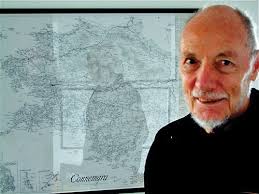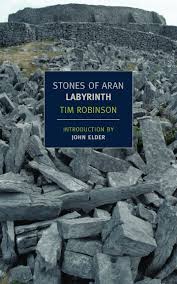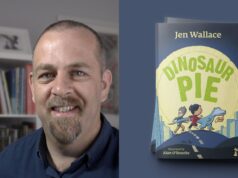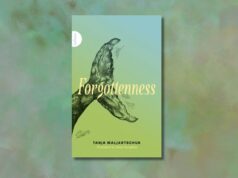Cathal O’Leary pays homage to the late, great Tim Robinson.

As time moves forward into the unmapped territory of the digital age, and the problems of climate change and the necropolis of waste looms, the work of Tim Robinson in mapping the Irish landscape grows in relevance and importance. Robinson’s achievements could be described as phenomenal and prophetic, yet the demeanour and tone of his writing remains modest and accessible. He walked the land of the West with an endearing and humble perspective, a youthful curiosity and openness. His work in mapping the areas of Aran, Connemara and the Burren allows for an appreciation of cartographic aesthetic, geological origins, archaeology, botany, and the storytelling and community traditions that once prevailed across these lands.
In Listening to the Wind Robinson mused that ‘chance decides what is obliterated and what survives if only to be distorted and misheard’. He continued to listen and considered that even ‘the breeze seemed to fill with gossiping shadows’. Yet a cartographer would not routinely set out to undertake the expansive collection of work that Robinson accounted. His fascinating combination of influences, methodical approach and desire for knowledge allowed for his unique take on these landscapes.
On first arriving in Ireland, Robinson recounted ‘the wildflowers were at their most abundant, the lambs were skipping in the fields, the birds were nesting in the cliffs and the sun shone, it was paradise’. He commended the help and sheer openness received from expert botanists, geologists and archaeologists along the way, and that in all his time working with and collecting from these experts, he never encountered any opposition ‘or any suppressed hostility to a total stranger and a total beginner’. This ‘absolute beginner’ stance allowed Robinson open access to a wealth of information from experts. For instance, as recounted on a tour of Roundstone, Connemara expert and archaeologist Michael Gibbons explained his initial impression of Robinson as a quiet, softly spoken man. Together they proceeded to map the small islands around the Connemara coast, and, upon departing company and investigating Robinson’s work, Gibbons was astounded at the depth and quality of Robinson’s writing, marvelling at his previous Aran volumes.
Forerunners to his maps were his paintings (now in IMMA), in geometric abstraction—a field that uses basic two-dimensional geometric shapes, and often features shapes created by different lines on a continual path. Combining the traditional aesthetic of cartography with characteristics of geometric abstraction, Robinson discovered a unique niche of artistic cartography. Adding the emotive stories and histories of the land—the centuries-old storytelling tradition of the West—gave further depth, emotion and intrigue to his work.
Robinson’s writings transcend any singular stylistic classification. His logistically inclined approach allowed him to get to the root of the equation at hand—for instance, his dissatisfaction with the haphazard anglicisation of place-names. In Listening to the Wind, he remarked that ‘Irish place names dry out when anglicized, like twigs snapped off from a tree’. Reading his publications has a feel of walking the land with him while listening to his personal and collected stories. Robinson’s inquisitive approach took him back to the formation of the land and sea itself. He stated that ‘to understand something of the nature of these rocks and of the forces that shuffled mountain ranges one across another, one has to look into the births and deaths of lands and seas, the history of geography, in which, as it happens, the terrains constituting what is now Ireland have repeatedly been in the thick of the collisions of continents’. He continued, stating that the oldest rocks of Connemara date back roughly 700 million years—a considerable span of time.
Robinson’s extensive study of the formation of mountains, the geologic origins and the ever-changing nature of the landscape influenced his writing immensely and he often alluded to grander statements when discussing immediate observations. For instance, discussing the walls of Aran in Labyrinth: ‘one hears how, over centuries, this landscape was created by the placing of stone on stone, how it is nowadays barely maintained by the replacement of the fallen stone, and how it will lapse into rubble stone by stone’. This suggests that Robinson was also referring to the birth of land, the disrespect of the planet’s current inhabitants and, ultimately, the demise of civilisation into rubble.
Similarly, Robinson’s curiosity and interest towards the botany of Aran allowed for some interesting revelations. He questioned the maidenhead fern and wonders ‘why does a plant of the warm south grow on these bleak islands, whose other botanical stars are the limestone bugle, from northern and mountainous areas of Europe, and the spring gentian, best known from the Alps?’ Many people visit Aran to marvel at its stark beauty and the adaptability and stoicism of its natives. It could be said that the maidenhead is a fitting symbol of the achievements of the natives to maintain their traditions and be content to live in an inhospitable climate.
Robinson’s occasional comment on his relationship with the Roundstone community further revealed his endearing personality and allowed segments of his humour to shine through. Although a resident of Roundstone for many years, in Listening to the Wind he outlined his place in the community as ‘one of my functions in the village is to be a perambulating historical litter basket; anyone who comes across an old account book or remembers a place name their grandparents used to use may rely on me to receive it into my care’. In his work Robinson was always conscious of the preceding line of thought and maintained the approach of an individual who is happy to be able to walk and marvel at this earth, living with it rather than shaping it based on his own needs. Discussing the influence of the sea on his little house in Roundstone, he said: ‘[we] prefer to live with the sea rather than fight it; if it comes in, it will go out again, and the carpet willstand a few more soakings before it disintegrates’. The stylistic and subject diversity of each volume indicates the stance of the eccentric local antiquary, environmentalist, cartographer or artist.
In his own words, ‘I sometimes feel like a priest bending his ear to the mouth of a dying man to capture the profound and determinative sense of his last breath’. He did indeed bend his ear to the earth and capture what may very well have been lost and swallowed by time.

Cathal O’Leary is a sound artist and writer based in Connemara. He contributes to the Galway branch of Conradh na Gaeilge.















